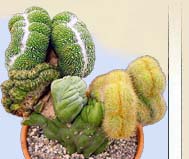Indoor
Floriculture

Leafy succulents
by Peter Lapshin

Cacti Library
'Cultivar' (V.Kalishev)

Moscow
Succulent Society

Moscow Indoor
Plant Club

Travels, nature,
botanical gardens

About Episcia
(Gesneriaceae)
 |
 |
CULTIVAR / КУЛЬТИВАР e-Magazine about exotic forms of Cactaceae ENGLISH / RUS-(Win1251) | |||
|
|
|

|
Text and photo: Zdenek Yirushe and Ivanka Krzhivankova
Peru - the full name of the Republic of Peru - located in the west of South America. Its area is 1 030 thousand square kilometers. Population - 23.5 million. In the capital, Lima, home to as many people as in the whole Czech Republic (10.3 million - the originator of the note). National language Spanish, but among the indigenous population can be found and people still possess the ancient languages of Indian tribes. Currency - Nuevo sol, a sol is 10 CZK (about 7 rubles - approx. Status.). In Peru, we spent three months, our main objective was cacti. Already in the central part of the country felt the humidity. In areas adjacent to the Pacific coast, mostly rain begins each day about an hour of the day and goes until the next morning. On the side of the Andes, to the interior of the continent, rainfall is less than. This rain may begin with the evening. Days of rain - a rare exception. Sometimes rain starts pouring and the early morning. But the coastal areas in the sediments are extremely poor. The reason is that the cold air cools the ocean during the pair, who then falls as rain over the ocean surface. Cold air over land warms and dries quickly. Only during the cold season here, there fogs, which are the main source of moisture for plants such as Tillandsia, Islaya.
Peru - a country mainly poles similar cacti - Cereus, which look wonderful in the natural environment, but for amateur cramped conditions are too great. Here you can find a lot of cacti, are well-known Czech fans, the existence of others, but we did not suspect. This, for example, Armatocereus, Corryocactus, Rauchocereus, Weberbauerocereus, Loxanthocereus, Lasiocereus, Erdisia and others. We have a growing preference for visually impressive Cereus plants, for example, densely pubescence Espostoa, who are demanding to winter temperatures, or Oreocereus, originating from the high mountains, and therefore cold.
Among the most popular cacti can be attributed, and Neoraymondia, who naturally look like a nice little rib bars, Azureocereus with bluish skin, effectively erect barbed Haagecereus. Of interest in terms of collecting cacti include the genera such as Melocactus, Oroya, Matucana, Islaya, Arequipa, Mila, Lobivia. Melocactus attract attention to their impressive tsefaly, these plants more demanding heat. Although Melocactus peruvianus comes from dry areas of the Pacific coast, where, as we have said, little precipitation. But half meter Melocactus bellavistensis growing up in northern Peru, mainly in the Maranien River. Here, more precipitation falls. Melocactus onychacanthus quite difficult to detect because they are well disguised in the thick bushes and tall grass.
Genus Oroya I am not afraid to include the most attractive Peruvian cactus. These plants differ expressive thorns and small, like wax, colors, from yellow to reddish-pink. They grow on high-altitude alpine meadows. Often reach a very respectable dimensions, some more than 20 cm in diameter. Here, in the central highlands of Peru, even the morning temperature in summer is not far above zero. It is moisture, the soil is almost never dries. Anyone who has ever seen Oroya in nature, do not forget the sight never remain indifferent to the cactus.
Next interesting race - Matucana, distributed nearly throughout the Peruvian Andes, as in the mountains and the plains. But Lobivia more common in the mountains of southern Peru. Its bright-colored flowers well enliven the landscape. Genus Arequipa got its name from the southern Peruvian city in the vicinity of where these cacti grow. They are decorated with red flowers zigomorfnymi have a cylindrical shape and excellent prickles. In our collections, these cacti can be seen only occasionally.
|
| Cultivar e-magazin: Copyright (c) by Valery Kalishev, Chelyabinsk, Russia, since 2000. Design and hosting by Peter Lapshin, since 2002. Contacts: Peter Lapshin |
|
|